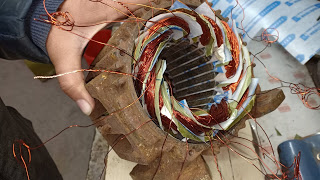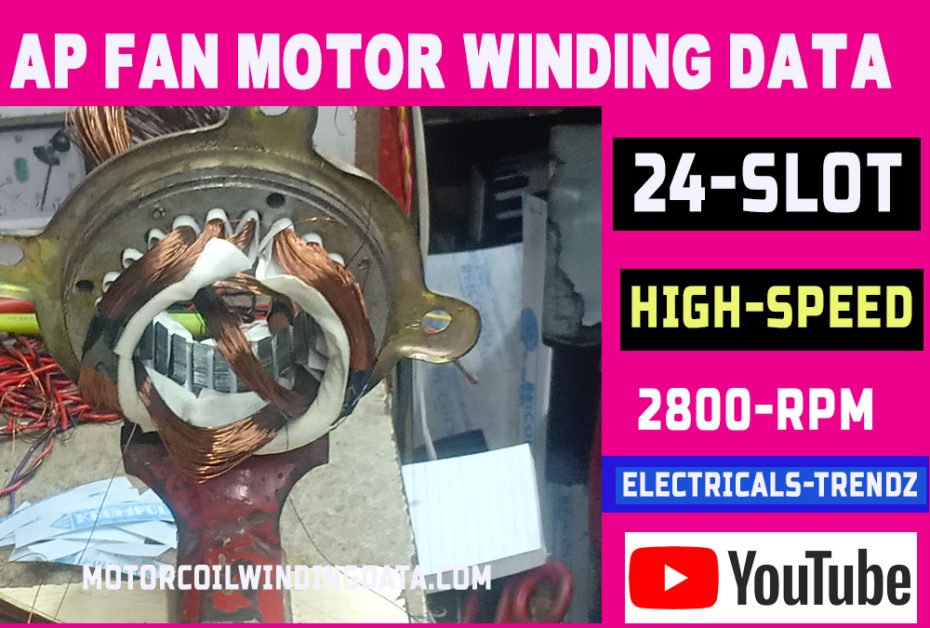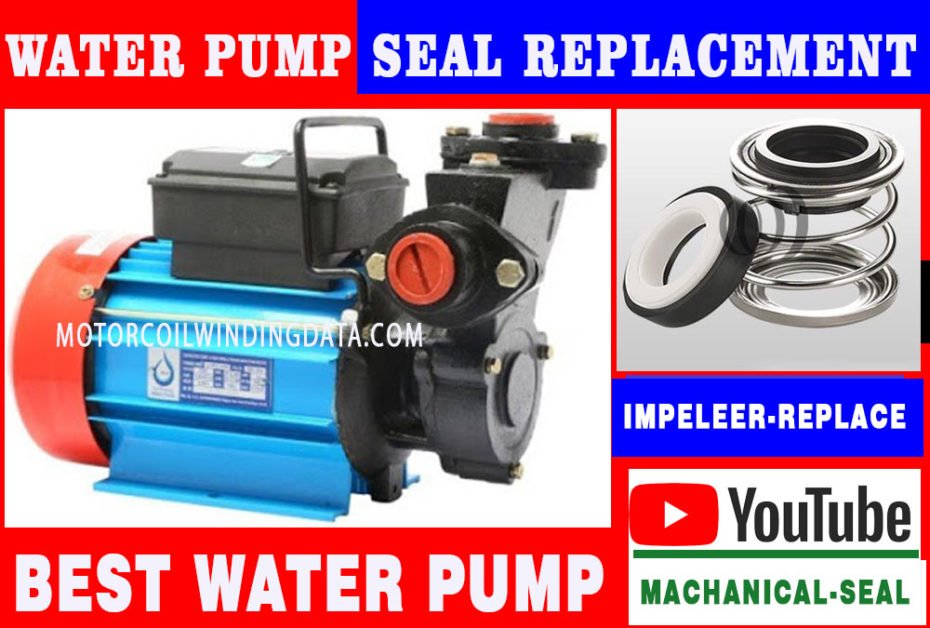Motor Winding: Unraveling the Core of Efficient Motors
Basics of Motor Winding- In electrical engineering, “motor winding” might sound like Technical jargon. However, understanding this crucial aspect is essential for anyone dealing with motors, from DIY enthusiasts to seasoned professionals. Let’s delve into the intricacies of motor winding, exploring its basics, common issues, rewinding processes, and the future trends shaping this field.
Topics Cover In This Post
- 1 Introduction About Motor Winding.
- 2 How to calculate motor winding data?
- 3 Basics of Motor Winding
- 4 Understanding Coil Windings?
- 5 Factors Affecting Motor Winding
- 6 Common Issues in Motor Winding
- 7 Motor Rewinding Process
- 8 Benefits of Proper Motor Winding
- 9 Case Studies
- 10 Industry Standards and Regulations
- 11 Motor Winding Tips?
- 12 Motor Winding?
- 13 Types Of Motor Winding?
- 14 Wotor winding Formula?
- 15 Layer Of Motor Winding?
- 16 3 Phase Motor Winding?
- 17 What Is Motor Rewinding?
- 18 Cooler Motor Winding?
- 19 FAQs
- 20 Conclusion:-
Introduction About Motor Winding.
Electric motors power many devices, from household appliances to industrial machinery. At the heart of their functionality lies the intricate process of motor winding. This article aims to demystify motor winding, offering insights into its fundamentals and shedding light on its importance in various applications.
How to calculate motor winding data?
To Calculate motor winding data, determine the motor’s specifications, including voltage, power, speed, frequency, and number of poles. Use the formula ( N_s = \frac{120f}{P} ) to find synchronous speed and calculate slots per pole per phase (SPP) as ( SPP = \frac{\text{Total Slots}}{\text{Poles} \times \text{Phases}} ). Decide on coil pitch (full or short-pitch) and calculate the number of turns per coil based on voltage and flux. Choose wire gauge based on current capacity, and ensure proper insulation and slot filling for efficiency and durability.
What is motor calculation?
Motor calculation involves determining key parameters such as power, voltage, current, speed, torque, and efficiency to design or evaluate a motor’s performance. It includes calculating synchronous speed ((N_s = \frac{120f}{P})), current ((I = \frac{P}{V \times \eta \times \text{PF}})), torque ((T = \frac{P \times 60}{2\pi N})), and selecting components like winding turns, wire gauge, and insulation based on the motor’s operating conditions and specifications. These calculations ensure the motor meets performance and reliability requirements.
What is the formula for RPM motors?
The Formula for calculating the RPM (revolutions per minute) of a motor is:

where (N_s) is the synchronous speed in RPM, (f) is the supply frequency in Hz, and (P) is the number of poles in the motor. The actual speed ((N)) of an induction motor is slightly less than (N_s) due to slip, calculated as (N = N_s \times (1 – \text{slip})).
Basics of Motor Winding
Motor winding involves the careful arrangement of wire coils in a specific pattern within a motor. The configuration of these windings varies based on the type of motor, whether it’s a simple single-phase motor or a more complex three-phase motor. Understanding these basics is crucial for comprehending the intricacies of motor operation.

Understanding Coil Windings?
Coil windings play a pivotal role in the performance of electric motors. Exploring the different techniques used in coil winding, such as lap winding and wave winding, provides valuable insights into optimizing motor efficiency for specific applications.
Factors Affecting Motor Winding
Temperature considerations, wire size, and insulation materials significantly impact motor winding. Delving into these factors helps users make informed decisions when selecting or designing motors for specific tasks.
Common Issues in Motor Winding
Overheating is a prevalent issue in motor winding, often caused by factors like inadequate cooling or excessive current. This section addresses these issues and provides practical strategies for preventing and resolving winding-related problems.
Motor Rewinding Process
In instances where the motor winding is damaged or worn out, the rewinding process becomes crucial. This section outlines the steps involved in motor rewinding, emphasizing the importance of professional services to ensure optimal results.
Benefits of Proper Motor Winding
Proper motor winding not only enhances efficiency but also contributes to the longevity of the motor. Exploring the benefits underscores the economic advantages of investing in quality winding practices.
Case Studies
Real-world examples of successful motor winding applications highlight the impact of proper winding on various industries. Additionally, examining cases of motor winding failures provides valuable lessons for avoiding similar pitfalls.
The landscape of motor winding is continually evolving with technological advancements. This section explores emerging technologies and their potential to reshape the future of motor engineering.
For enthusiasts eager to explore motor winding projects, safety is paramount. This section offers essential safety precautions and a step-by-step guide for basic motor winding repairs.
Predicting the future of motor winding technology involves considering current trends and technological breakthroughs. This section offers insights into potential advancements and their implications for the industry.
Industry Standards and Regulations
Adherence to industry standards and regulations is crucial for ensuring the safety and reliability of motor winding. This section outlines compliance requirements and emphasizes the importance of meeting these standards.
Motor Winding Tips?

- Coil Winding: The copper wire is wound into coils around the stator core. The winding pattern and the number of turns in each coil are critical for the motor’s performance.
- Winding Configuration: The winding may be arranged in different configurations, such as lap winding or wave winding, depending on the motor’s design and intended application.
- Insulation: Each winding is insulated from the others to prevent short circuits. Insulation is crucial to ensure the motor’s reliability and safety.
- Copper Wire Gauge: The gauge or thickness of the copper wire used in the winding affects the motor’s efficiency and power handling capability. A thicker wire can carry more current but may result in a larger, heavier motor.
- Motor Efficiency: Proper winding is essential for achieving optimal motor efficiency. It ensures that the motor operates smoothly, with minimal energy loss and heat generation.
- Maintenance: Regular maintenance and inspection of the winding are necessary to identify and address any issues that may arise over time, such as insulation deterioration or broken wires.
Motor Winding?
Motor winding refers to the process of wrapping insulated wire (usually copper or aluminum) around a magnetic core to create a coil. This coil is an essential component in electric motors, serving to generate a magnetic field when an electric current flows through it. The interaction between this magnetic field and the stator’s field (if it’s an induction motor) or a permanent magnet (in the case of a permanent magnet motor) produces the mechanical rotation necessary for the motor’s function.
1. Wire Gauge and Material
The choice of wire gauge and material is pivotal in cooler Motor Winding. Copper, with its excellent conductivity, is a preferred material. Additionally, selecting the appropriate wire gauge ensures optimal current flow, minimizing energy loss and enhancing overall efficiency.
2. Coil Configuration
The arrangement of coils plays a crucial role in heat dissipation. A well-thought-out coil configuration maximizes airflow, preventing overheating. Engineers often employ advanced techniques such as bifilar winding to achieve superior cooling efficiency.

Motor winding is the backbone of any electrical motor, acting as its circulatory system. It involves intricately winding copper or aluminum wire around a core, typically made of iron. This fundamental process dictates the motor’s functionality, influencing its efficiency and overall performance.
Types Of Motor Winding?
There are various types of motor windings, and the design depends on the specific requirements of the motor. Some common types include:
- Single-phase winding: Found in single-phase motors, this winding typically consists of a main winding and an auxiliary winding. It is commonly used in household appliances.
- Three-phase winding: Used in three-phase motors, this winding involves three sets of coils spaced at 120 degrees apart. Three-phase motors are widely used in industrial applications due to their efficiency and reliability.
- Coil winding: This involves winding wire into coils, which can be used in various configurations based on motor type. Coil winding is a critical step in the manufacturing of electric motors.
- Rotor winding: In some motors, the winding is on the rotor (rotating part), such as in a wound rotor induction motor.
- Stator winding: In others, the winding is on the stator (stationary part), such as in a squirrel cage induction motor.
Wotor winding Formula?
The motor winding formula is a crucial aspect of electrical engineering, providing the necessary calculations for designing and constructing efficient electric motors. The formula for motor winding primarily involves determining key parameters such as the number of turns, wire gauge, and coil configuration. Here’s a concise overview of the fundamental motor winding formula:
Turns per Coil (N): N=Voltage×Turns per VoltFrequencyN=FrequencyVoltage×Turns per Volt
- Voltage: The operating voltage of the motor.
- Turns per Volt: The specific number of turns required per volt, dependent on the motor design.
- Frequency: The frequency of the alternating current (AC) power supply.
The Fundamentals of Motor Winding
In the realm of electric motors, the motor winding formula is the bedrock upon which successful designs are built. It involves a meticulous balance of variables, each contributing to the motor’s overall functionality.
Key Components in Motor Winding
- Coil Configuration: The arrangement of coils significantly impacts motor efficiency. Engineers must adeptly navigate the intricacies of coil positioning to ensure optimal performance.
- Wire Gauge Selection: Choosing the right wire gauge is akin to selecting the perfect thread for a fabric. Precision in this selection directly influences the motor’s conductivity and, consequently, its efficiency.
Unraveling the Mysteries of Motor Winding Calculations
Empowering Engineers with Knowledge
As engineers delve into the motor winding formula, a blend of mathematical prowess and practical application becomes imperative. Here’s a simplified breakdown:
Layer Of Motor Winding?
1. Single-Layer Winding
Characterized by a single layer of wire, this type of winding is renowned for its simplicity. It’s often employed in applications where space is a premium, ensuring a compact yet powerful motor design.

2. Double-Layer Winding
Contrastingly, double-layer winding utilizes two layers of wire, offering enhanced efficiency and reduced copper loss. This method is prevalent in motors requiring a balance between performance and compactness.
3. Random Winding
As the name suggests, random winding employs a non-uniform pattern, optimizing space usage. This technique finds application in specialized motors, where irregular winding patterns cater to specific operational requirements.
3 Phase Motor Winding?
In the Realm of Electrical Engineering, the intricacies of a three-phase motor winding form the backbone of countless industrial applications. Understanding the nuances of this critical component is paramount for engineers, technicians, and enthusiasts alike. In this comprehensive guide, we delve deep into the complexities of three-phase motor winding, providing invaluable insights and expert knowledge to empower you in this dynamic field.

At its core, a three-phase motor is a marvel of engineering that converts electrical energy into mechanical motion. Comprising three separate windings, it operates seamlessly, delivering enhanced efficiency and power compared to its single-phase counterparts.
What Is Motor Rewinding?
Motor rewinding is the process of repairing or refurbishing an electric motor by replacing its damaged or worn-out windings. This involves removing the old wire coils from the motor’s stator or rotor and installing new wire, ensuring the motor can function efficiently and reliably. The Motor Rewinding is often done to restore motors that have failed due to insulation breakdown, overheating, or other issues.
Cooler Motor Winding?
In the world of cooling systems, the integral role of a Cooler Motor Winding cannot be overstated. This guide aims to unravel the intricacies surrounding cooler motor windings, providing an in-depth exploration of their significance, types, and optimization techniques.
How to calculate kW of motor?
To calculate the kW (kilowatts) of a motor, use the formula:

for three-phase motors, and single-phase motors. Here, VVV is voltage (volts), III is current (amps), PF\text{PF}PF is power factor, and η\etaη is efficiency (decimal). Adjust units and factors based on the motor’s operating conditions.
3-Speed Cooler Motor Winding Video:-
FAQs
What is motor winding, and why is it essential?
Motor winding is the arrangement of wire coils within an electric motor, crucial for its proper functioning. It is essential for generating magnetic fields that drive motor operation.
What are the common issues in motor winding?
Common issues include overheating, insulation failure, and short circuits. These can result from various factors, such as poor maintenance or excessive loads.
Can I rewind a motor myself?
While basic repairs may be attempted, rewinding is best left to professionals due to the complexity involved and the risk of compromising motor efficiency.
How do I choose the right motor winding for my application?
Consider factors like temperature, load requirements, and insulation materials. Consulting with experts can help tailor the winding to your specific needs.
Are there eco-friendly practices in motor winding?
Yes, sustainable practices in motor winding include using recycled materials, optimizing energy efficiency, and adhering to environmentally friendly manufacturing processes.
Conclusion:-
In conclusion, motor winding is a nuanced aspect of electrical engineering with far-reaching implications for various industries. From ensuring optimal motor performance to contributing to sustainability goals, understanding and implementing proper motor winding practices is essential. Embracing innovations and adhering to industry standards will undoubtedly shape the future of this critical field.



